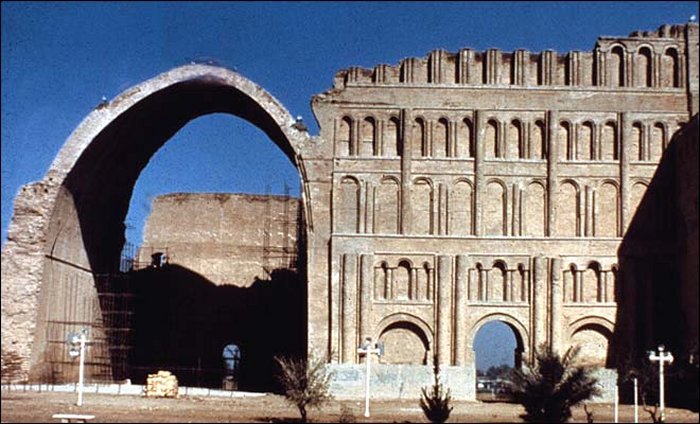MessageToEagle.com – The world’s longest human conflict in history was between Romans and Persians.
The Hundred Years’ War and even Rome’s long and epic struggle with Carthage were brief compared to Rome and Persia’s Near Eastern struggle. The wars between these great empires lasted about 721 years.
At the beginning of the ancient Roman Empire, the conflicts were of only of territorial nature. Ancient Romans used aggressive methods to expand the boundaries of its territories. Later, there came to be a religious aspect to the wars as the Eastern Realm of Christendom confronted the Western bounds of Persian Zoroastrianism.
The ancient Roman Empire stretched from Syria to Britain, only one power could challenge Roman arms on anything approaching an equal footing: the Persian rulers of the land that now comprises Iraq. This area, the location of numerous ancient civilizations, was the heart of a Persian empire that stretched from modern Pakistan to the Syrian border. Two dynasties ruled the Persian Empire, the Parthians (238 B.C.–A.D. 227) and later the Sassanids (A.D. 227-651).

Persians had established the capital city of Ctesiphon thirty-five miles from the site of modern Baghdad. During the following centuries, as they became great empires, Rome and Persia fought many wars. The Romans attacked Ctesiphon more than a half-dozen times, and on five occasions in the second and third centuries A.D., they took the city by storm.
Roman victories in Iraq were transitory and self-defeating.
Julius Caesar’s planned invasion of Iran through Armenia was cut short by his assassination on the Ides of March in 44 B.C. Mark Antony carried out Caesar’s invasion plan in 36 B.C. but without the great military leader’s tactical skill. He lost half his men in the mountains of northwest Iran and on the harsh winter march home through Armenia.
Emperor Trajan invaded Armenia and Mesopotamia during 114 and 115 and annexed them as Roman provinces. He captured the Parthian capital, Ctesiphon, before sailing downriver to the Persian Gulf.
Being too old to fight, he later withdrew his armies and returned to Syria. Emperor Trajan died in 117.
Drawing on a wealth of new research, archaeologist, historian, and master storyteller Richard Miles resurrects the civilization that ancient Rome struggled so mightily to expunge. This monumental work charts the entirety of Carthage’s history, from its origins among the Phoenician settlements of Lebanon to its apotheosis as a Mediterranean empire whose epic land-and-sea clash with Rome made a legend of Hannibal and shaped the course of Western history. Carthage Must Be Destroyed reintroduces readers to the ancient glory of a lost people and their generations-long struggle against an implacable enemy. Read more
The struggles continued between the empires. Finally, a Persian hero arose in the person of Shapur I, second king of the Sassanid dynasty, whose reign of 241-272. He retook much of the territory Rome had won in previous wars and even made incursions into Roman territory. He captured Roman Emperor Valerian after crushing his army in A.D. 260, and Khusro II in 611 penetrated to the Bosporus, in sight of Constantinople, before a Byzantine counterattack drove him and his men back to Iraq. The Sassanid state collapsed not long after the Arab victory at the Battle of Qadesiya in Iraq in 637. Byzantium survived but only after losing Syria, Egypt, Palestine, and northern Africa to the Arabs.
See also:
Carthage: Prosperous Phoenician Colony That Became Dominant Power In The Western Mediterranean
Parthians: Their Great Empire And Skilled Horse Archers
Achaemenid Empire Was The World’s Largest Ancient Empire
King Mithradates VI Of Pontus Used Poison To Avoid Death By Poison
What Was A ‘Triumvirate’ In Ancient Rome?
The conflict between the great empires was a matter of power and glory. For centuries, every ambitious young Roman dreamed of winning a battle and returning home to celebrate a triumph. A triumph was not merely a victory parade, although the successful general–in a chariot pulled by white horses and with a laurel wreath on his head–would ride through the city of Rome to the cheers of the crowd, accompanied by his troops and with booty and captives on display. The ostentatious parade was an official recognition by the Roman Senate that the general had won a major victory and that, in effect, he was a man to be reckoned with. For many a Roman noble, the triumphal procession led to the Forum, where political success began.
The devastating effects of these wars were that both empires crippled. Persia was plunged into several years of dynastic turmoil and civil war.
The Roman Empire was also severely affected, with its financial reserves exhausted by the war and the Balkans now largely in the hands of the Slavs.
So, which side won the battle? None, actually.
The winners of the conflict between the Romans and Persians were the Arabs. Within a few years both once great empires were struck by the onslaught of the Arabs who inherited the energy that the two powers wasted on the conflict.
Rarely in the history of human conflict has a feud such as the one between the empires of Rome and Persia lasted so long and accomplished so little.
MessageToEagle.com







